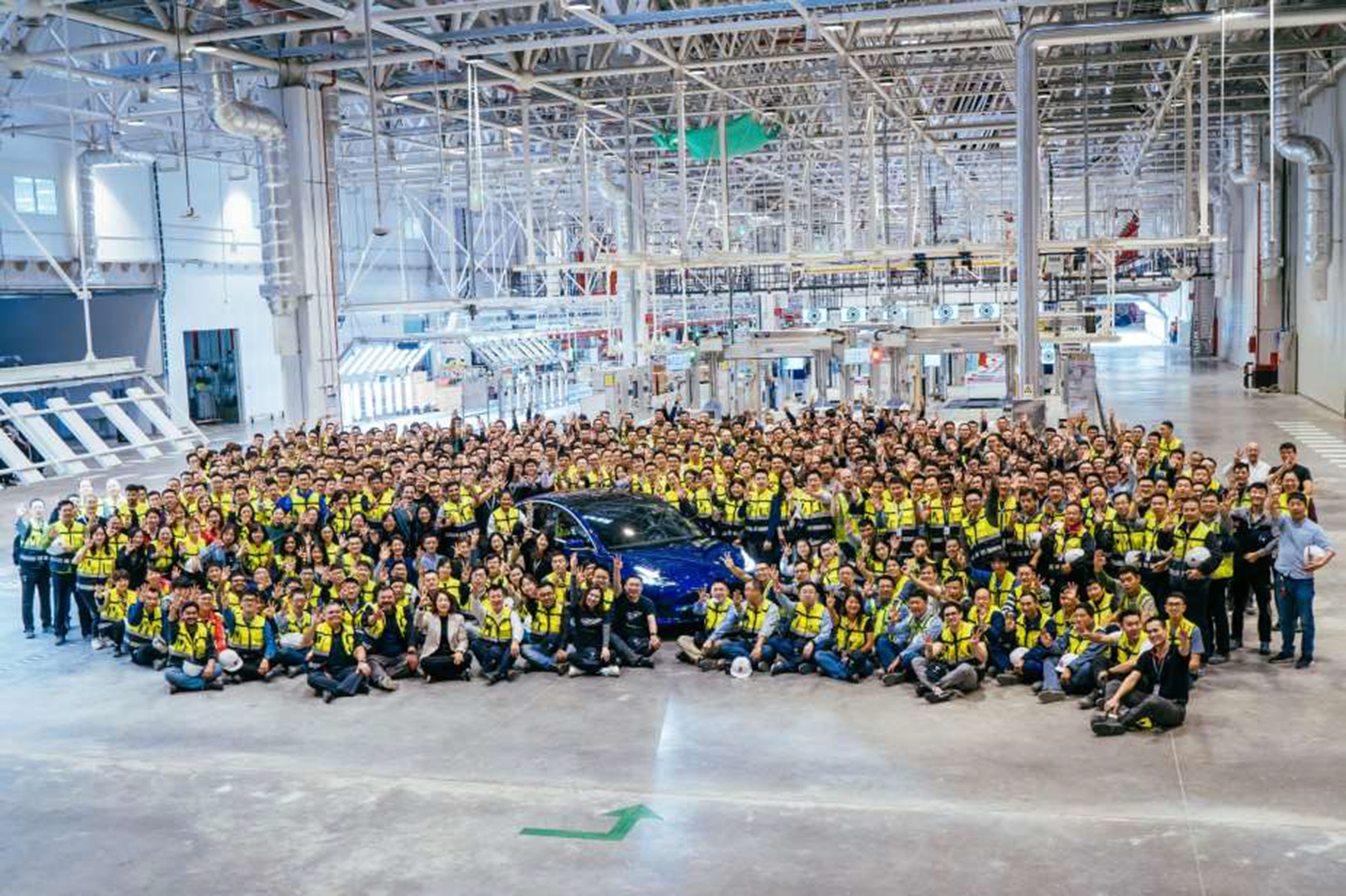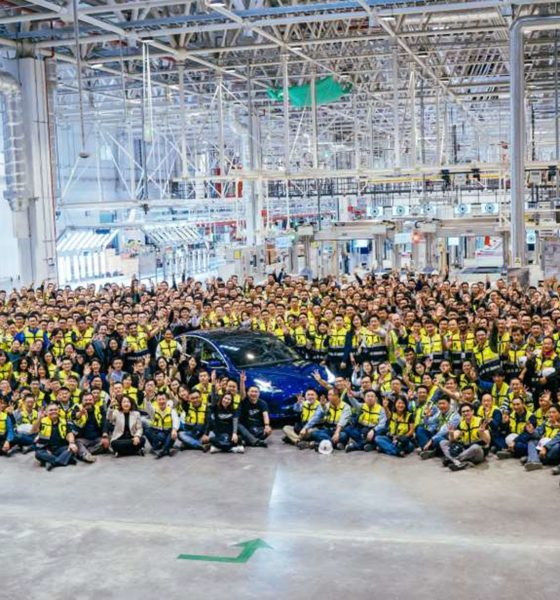

News
Tesla's hiring ramp in 2019 bucks traditional auto trends as TSLA continues to soar
Tesla short sellers have been choking on over $2 billion in losses as Tesla share prices set record highs recently, even hitting over CEO Elon Musk’s once-take-private price of $420 per share on Monday morning. As the year closes, one can only wonder why Tesla continues to grow despite doubts from the company’s most dedicated critics. Over this time, Tesla has also engaged in a hiring ramp that increased its employee count significantly.
Thinknum Alternative Data finance editor Jon Marino zeroed in on how Tesla job postings are related to Tesla stock’s (NASDAQ:TSLA) soaring prices. Marino noted that the electric car maker’s job postings have increased 125% since the start of the second half of 2019. During the same timeframe, TSLA stock soared by as much as 75%.
“Musk has added more staffers to his manufacturing group in 2019 already, in part driven by 97% more postings since the year began. Across Tesla job posting categories, there are a handful of groups seeing more job postings since the year began, like supply chain, as well,” he wrote.
Tesla’s Gigafactory 3 in Shanghai and Gigafactory 4 in Brandenburg, Germany have the potential to add even more employees to the company as well. Aside from the role these facilities will play in spreading Tesla’s presence in the biggest automotive markets in the globe, they will also create new jobs. For example, Tesla is looking to hire more frontline workers for its Gigafactory 3 facility that aims to produce 250,000 and eventually 500,000 vehicles per year. Meanwhile, Tesla’s Gigafactory 4 will hire 3,000 workers to start and may later increase to 8,000 employees for the upcoming factory.
Tesla can be considered a trendsetter in the automotive industry. Beyond its amazing mission to achieve sustainable energy, it has been defying what has been happening to the rest of the automotive industry. As Tesla expands and hires more people, other American carmakers have slashed their workforces at a pace fastest since the recession about a decade ago. During the first half of 2019, car manufacturers have cut almost 22,000 jobs.
Tesla’s products are also well-loved by the market. In fact, the Model 3 is the best-selling electric vehicle in the United States this year and even bucked the EV sales slump in China, the world’s largest electric car market. Its products also redefine conventions, as evidenced by the Cybertruck. The polarizing design of the futuristic electric pickup truck has gained all kinds of opinion from all directions, but no one can deny how it almost instantaneously made autophiles go head over heels with it as the 250,000 preorders clearly suggest.
With everything in the pipeline, Tesla has not hit the ceiling. With new funding from Chinese banks to support its Gigafactory 3 in China, the smooth-sailing negotiations for the Gigafactory 4 in Germany, and the much-awaited Model Y and Cybertruck, one can only expect that more TSLA skeptics will be converted in the near future.
Disclosure: I have no ownership in shares of TSLA and have no plans to initiate any positions within 72 hours.

News
Tesla FSD fleet is nearing 7 billion total miles, including 2.5 billion city miles
As can be seen on Tesla’s official FSD webpage, vehicles equipped with the system have now navigated over 6.99 billion miles.

Tesla’s Full Self-Driving (Supervised) fleet is closing in on almost 7 billion total miles driven, as per data posted by the company on its official FSD webpage.
These figures hint at the massive scale of data fueling Tesla’s rapid FSD improvements, which have been quite notable as of late.
FSD mileage milestones
As can be seen on Tesla’s official FSD webpage, vehicles equipped with the system have now navigated over 6.99 billion miles. Tesla owner and avid FSD tester Whole Mars Catalog also shared a screenshot indicating that from the nearly 7 billion miles traveled by the FSD fleet, more than 2.5 billion miles were driven inside cities.
City miles are particularly valuable for complex urban scenarios like unprotected turns, pedestrian interactions, and traffic lights. This is also the difference-maker for FSD, as only complex solutions, such as Waymo’s self-driving taxis, operate similarly on inner-city streets. And even then, incidents such as the San Francisco blackouts have proven challenging for sensor-rich vehicles like Waymos.
Tesla’s data edge
Tesla has a number of advantages in the autonomous vehicle sector, one of which is the size of its fleet and the number of vehicles training FSD on real-world roads. Tesla’s nearly 7 billion FSD miles then allow the company to roll out updates that make its vehicles behave like they are being driven by experienced drivers, even if they are operating on their own.
So notable are Tesla’s improvements to FSD that NVIDIA Director of Robotics Jim Fan, after experiencing FSD v14, noted that the system is the first AI that passes what he described as a “Physical Turing Test.”
“Despite knowing exactly how robot learning works, I still find it magical watching the steering wheel turn by itself. First it feels surreal, next it becomes routine. Then, like the smartphone, taking it away actively hurts. This is how humanity gets rewired and glued to god-like technologies,” Fan wrote in a post on X.
News
Tesla starts showing how FSD will change lives in Europe
Local officials tested the system on narrow country roads and were impressed by FSD’s smooth, human-like driving, with some calling the service a game-changer for everyday life in areas that are far from urban centers.

Tesla has launched Europe’s first public shuttle service using Full Self-Driving (Supervised) in the rural Eifelkreis Bitburg-Prüm region of Germany, demonstrating how the technology can restore independence and mobility for people who struggle with limited transport options.
Local officials tested the system on narrow country roads and were impressed by FSD’s smooth, human-like driving, with some calling the service a game-changer for everyday life in areas that are far from urban centers.
Officials see real impact on rural residents
Arzfeld Mayor Johannes Kuhl and District Administrator Andreas Kruppert personally tested the Tesla shuttle service. This allowed them to see just how well FSD navigated winding lanes and rural roads confidently. Kruppert said, “Autonomous driving sounds like science fiction to many, but we simply see here that it works totally well in rural regions too.” Kuhl, for his part, also noted that FSD “feels like a very experienced driver.”
The pilot complements the area’s “Citizen Bus” program, which provides on-demand rides for elderly residents who can no longer drive themselves. Tesla Europe shared a video of a demonstration of the service, highlighting how FSD gives people their freedom back, even in places where public transport is not as prevalent.
What the Ministry for Economic Affairs and Transport says
Rhineland-Palatinate’s Minister Daniela Schmitt supported the project, praising the collaboration that made this “first of its kind in Europe” possible. As per the ministry, the rural rollout for the service shows FSD’s potential beyond major cities, and it delivers tangible benefits like grocery runs, doctor visits, and social connections for isolated residents.
“Reliable and flexible mobility is especially vital in rural areas. With the launch of a shuttle service using self-driving vehicles (FSD supervised) by Tesla in the Eifelkreis Bitburg-Prüm, an innovative pilot project is now getting underway that complements local community bus services. It is the first project of its kind in Europe.
“The result is a real gain for rural mobility: greater accessibility, more flexibility and tangible benefits for everyday life. A strong signal for innovation, cooperation and future-oriented mobility beyond urban centers,” the ministry wrote in a LinkedIn post.
News
Tesla China quietly posts Robotaxi-related job listing
Tesla China is currently seeking a Low Voltage Electrical Engineer to work on circuit board design for the company’s autonomous vehicles.

Tesla has posted a new job listing in Shanghai explicitly tied to its Robotaxi program, fueling speculation that the company is preparing to launch its dedicated autonomous ride-hailing service in China.
As noted in the listing, Tesla China is currently seeking a Low Voltage Electrical Engineer to work on circuit board design for the company’s autonomous vehicles.
Robotaxi-specific role
The listing, which was shared on social media platform X by industry watcher @tslaming, suggested that Tesla China is looking to fill the role urgently. The job listing itself specifically mentions that the person hired for the role will be working on the Low Voltage Hardware team, which would design the circuit boards that would serve as the nervous system of the Robotaxi.
Key tasks for the role, as indicated in the job listing, include collaboration with PCB layout, firmware, mechanical, program management, and validation teams, among other responsibilities. The role is based in Shanghai.
China Robotaxi launch
China represents a massive potential market for robotaxis, with its dense urban centers and supportive policies in select cities. Tesla has limited permission to roll out FSD in the country, though despite this, its vehicles have been hailed as among the best in the market when it comes to autonomous features. So far, at least, it appears that China supports Tesla’s FSD and Robotaxi rollout.
This was hinted at in November, when Tesla brought the Cybercab to the 8th China International Import Expo (CIIE) in Shanghai, marking the first time that the autonomous two-seater was brought to the Asia-Pacific region. The vehicle, despite not having a release date in China, received a significant amount of interest among the event’s attendees.








